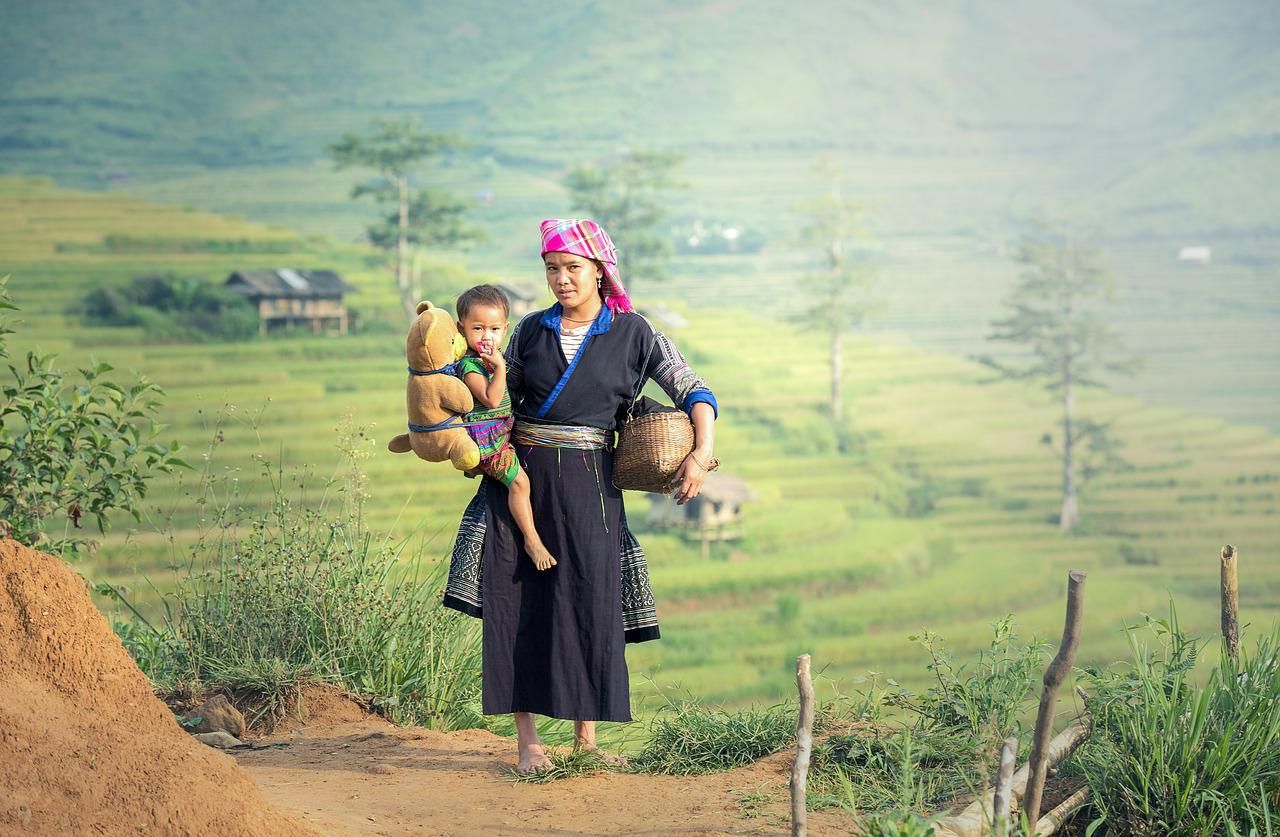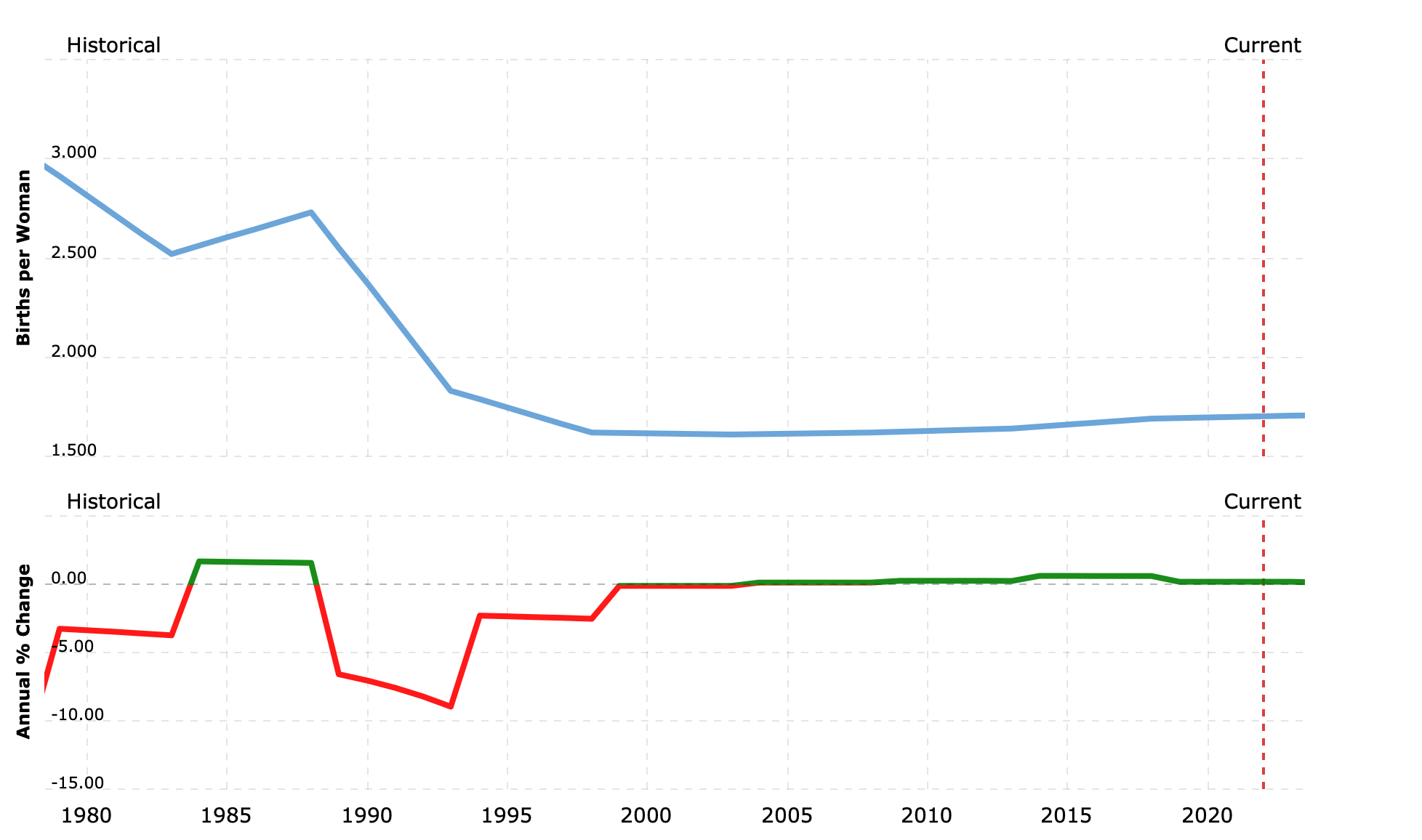China Increases Birth Rates to Address Aging Population
In August 2021, the Chinese government announced that it was endorsing a three-child policy.
Now experts believe this still might not be enough.
One of the most controversial topics in society is how many children a couple should have. In China, this has been a hotly debated topic for years with some advocating for a one-child policy while others say that each family should be allowed to have up to three children. Recently, the Chinese government announced that it was endorsing a three-child policy. While this shift will allow more families to have more than one child, it is still unclear whether or not all couples will take advantage of having more than one child. There are pros and cons to both having a one-child policy or a three-child policy and it will be interesting to see how the Chinese people respond to this change.
Since the late 1970s, China has had a one-child policy. The policy was enacted in order to curb the country's then-growing population and help with economic development. In 2015, the Chinese government announced that the one-child policy would be phased out and replaced with a two-child policy. This change was motivated by concerns about the country's aging population and shrinking workforce. The decision was made after a study showed that by 2030, one-third of China's population will be over 60 years old. To combat this, the government plans to encourage more births and offer incentives such as cash payments and longer maternity leave. This is a major shift for China, which has had a strict "one child policy" for many years.
The decline in China's working-age population could lead to a slowdown in economic growth. This would put pressure on social welfare programs and have implications for the country's migrant population.
China's aging population
The one-child policy was introduced in China in 1979 to limit the country's population growth. The policy allowed couples to have only one child, although there were some exceptions, such as if the first child was a girl or if the parents were ethnic minorities.The policy led to a dramatic decrease in China's birth rate, and by 2016 the country's fertility rate had fallen to just over one child per woman, well below the replacement level of two children per woman.

Photo by katsuma tanaka on Unsplash
The change in policy is aimed at addressing the challenge posed by China's aging population. According to UN estimates, China is set to become the world's oldest country by 2029, with more than a quarter of its population over the age of 60. The country's working-age population is also shrinking, and is set to fall by about 31 million between 2010 and 2030.

Data Source: https://www.macrotrends.net/countries/CHN/china/fertility-rate
The new policy now allows couples to have more than three children, although it is uncertain if or how quickly birth rates will rise in response to the change. Some experts have suggested that the policy may not be enough to significantly boost fertility rates, given the high cost of raising children and the preference for smaller families among many Chinese couples.
The change in China's birth policy is likely to have implications beyond its borders. The country's aging population and shrinking workforce could lead to a slowdown in economic growth, and put pressure on social welfare programs. China is also the world's largest source of migrants, and a decline in population growth could lead to fewer people leaving the country in search of work.
Until the changes will show significant effects, China will continue to face the daunting task of balancing the needs of its rapidly aging population with the demands of a growing economy.
Incentives for multi-child families
Providing financial incentives for having more children would be a departure from the country's previous family planning policies, which used fines and other punitive measures to discourage couples from having more than one child. The change is necessary because the one-child policy led to a dramatic decrease in China's birth rate.
These incentives include a cash bonus, as well as discounted medical care and education costs. Couples with a second child can receive a cash bonus of around $120 per month, while those with a third child can get around $240 per month. In addition, parents with more than one child can receive discounted medical care and other benefits.
The goal of these financial incentives is to encourage people to have more children.
The new policy would help couples offset the high cost of raising children. In addition, it would provide much-needed support to families who are struggling to balance work and child-rearing responsibilities.
Some experts have suggested that the policy may not be enough to significantly boost fertility rates, given the high cost of raising children and the preference for smaller families among many Chinese couples. However, it is a step in the right direction and shows that the government is committed to addressing the country's aging population crisis.
China provides affordable childcare
While childcare is expensive and difficult to find in most countries, the Chinese government is committed to providing affordable child care. They have set up a number of pilot programs across the country to test different models. So far, the results have been encouraging.
Providing affordable child care makes it easier for women to return to the workforce after having children. It can also free up more time for families to spend together.
Thus the Chinese government offers affordable childcare after maternity leave. The program allows mothers to receive a subsidy to help with the cost of care for their children. The subsidy is given on a sliding scale, depending on the family's income. The program is available to all mothers who have worked in China for at least one year.
The subsidy can be used at any type of childcare facility, including public nurseries, private nurseries, and home-based care. Mothers can also use the subsidy to pay for babysitters or nannies. The program provides free or subsidized daycare for children aged 2 to 6 years. In addition, mothers can be given up to a year off work for 70% of their normal salary. The program has helped many mothers return to work after childbirth.
According to studies between 2020 and 2021, the average daycare cost in the United States is around $10,000 per year. In China, that figure is a fraction of the cost at just around $1,540 per year. With childcare being this expensive many mothers in the United States and other Western countries leave their children in the care of family or friends while they return to work, leading to what has been termed the "child care crisis."
In China, there are now several government-run childcare facilities that offer quality care at low prices for all children including those from lower income families or who live far away from an urban center. The country's policy makers have implemented these successful pilot programs across various cities with the goal of eventually ensuring access regardless if you're rich or poor."
The government is also working to increase the birth rate. They have relaxed the one-child policy and are now encouraging couples to have two children. They are also providing financial incentives for families who choose to have more children.
Current status
Experts believe the measures taken by the Chinese government might still be too little to show effective results as the country's birth rate has been declining for too many years. However, the increasing attention on the betterment of families is good news for the future of China. In addressing the country's aging population, the burden on the social safety net could be relieved while China could continue to prosper in the future. An increase in China's birth rate would also be good news for the rest of the global economy in the long term. With more people entering the workforce, there will be more consumption and investments, leading to higher growth rates worldwide. So, while China faces some challenges in the years ahead, it is good to see that they are taking steps to address them. The world will benefit as a result.





